发布日期:2025-11-05
From June 30 to July 2, 2025, 39 Chinese and foreign teachers and students from the School of Construction and Arts of Beijing Jiaotong University, with the support of the Shenzhen Rail Transit Association, focused on the driving force of artificial intelligence and transportation modes for future urban space transformation and the development of urban space. On topics such as innovation power, lectures and on-site teaching courses of the "Future City Workshop" were held.
The lecturing experts participating in this workshop include Zhao Penglin, former secretary general of Shenzhen Municipal Party Committee and special consultant of Xiongan New Area, Zong Chuanling, deputy chief planner of Shenzhen National High-tech Industry Innovation Center, Zhang Ning, director of Orbit Institute, and Xu Xuhui, deputy chief planner of Shenzhen Planning and Land Development Research Center; Fang Yu, president of Shenzhen Branch of China Urban Planning and Design Institute, Gong Zhiyuan, deputy director of Planning and Design Institute, etc. This "Future City Course" aims to understand the development process of "building a track is building a city" through lectures and on-site inspections, understand the changes and guidance of future traffic on urban forms, and the application scenarios of new traffic modes such as low-altitude economy.
The Master of Urban and Rural Planning Program of the Ministry of Commerce of Beijing Jiaotong University comes from 22 international urban and rural planning officials from Myanmar, Nepal, Syria, Malawi, Botswana, Nigeria, Zimbabwe, Ethiopia, Burundi, Tanzania and Sierra Leone; As well as 17 Chinese students from sophomores, seniors and graduate students majoring in urban and rural planning participated in this course.
June 30: A preliminary study on the cognition and hub of track development from the perspective of future cities
On the morning of June 30th, the workshop group went to NOCC Building under the organization of Zhang Yuan of Shenzhen Rail Transit Association. Focusing on the theme of "From Shenzhen to Xiong'an-Innovative Development of Rail Transit", President Zhao Penglin systematically sorted out the TOD development process of "building a subway is building a city", so that students could realize the innovative role of smart technology in future urban space. Mr. Qie Xuegang of China Railway Design Group gave a lecture "Management and Technological Innovation of Major Urban Project Construction-Taking the Eye of Shenzhen as an Example" to interpret the superiority of Shenzhen's system and innovative atmosphere and its enlightenment, so that students can have a deeper understanding of Shenzhen's innovation and development.
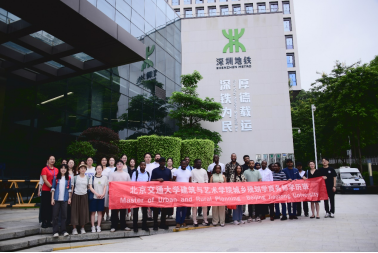

On the afternoon of June 30th, teachers and students went to important hubs for inspection. Qie Xuegang always led the students to Gangxia North Transportation Hub for on-site teaching city tour, so that Chinese and foreign students could have a deep understanding of the design success of "Shenzhen Eye" and the economic operation law behind the material space form with passenger flow as the core. At Futian Station and Futian Port, everyone learned that SF Express used the subway space to automatically transport driverless vehicles carrying 800-900 pieces of express delivery to the subway, and used drones to complete the last mile, realizing the seamless and efficient link between driverless vehicles + subways + drones. Visit the port design, learn about the cross-border connection of subways and the organization of port functional space, and learn about the key points of urban and traffic integration planning and design of Shenzhen-Hong Kong deep integration.
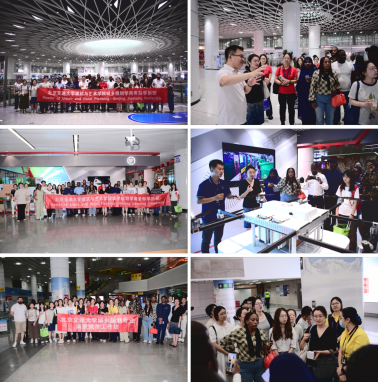
July 1: Practical visit and future transportation experience of rail-driven urban space
On the morning of July 1st, teachers and students went to the border port complex again for inspection. In Luohu, the first-generation port, everyone learned the classic passenger flow organization-arranging a series of transfer spaces along the main axis. The inscription of Shenzhen Station has only "Shenzhen" but no "Station", which means constant changes and reform. Later, I felt the forward-looking planning of Metro Line 1's reservation at the interface of Laojie Station. During its construction, hidden beams and columns were quietly buried to reserve space for the later access of Line 3 and realize "seamless transfer". Through the detailed multimedia display and graphic materials of Shenzhen Urban Planning Exhibition Hall, the students felt the urban development process and future blueprint of Shenzhen's "dare to be the first in the world". Students also learned that future-oriented planning should be forward-looking and far-sighted. In the 1990s, a large number of cross-border traffic between Shenzhen and Hong Kong was foreseen, which was the basis for the successful design of port hubs.
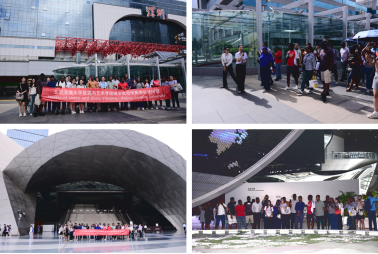
On the afternoon of July 1st, teachers and students experienced the traffic organization and functional space of Shenzhen North Railway Station. At the same time, everyone also had an in-depth understanding of the development status and future construction planning of Shenzhen's low-altitude economy, which made everyone have a three-dimensional understanding of the integration of future traffic and smart cities. At the take-off and landing platform of Shenzhen North Railway Station, the person in charge of Eastern Navigation introduced the current applications of general aviation and drones in Shenzhen and Guangdong-Hong Kong-Macau Greater Bay Area, such as sightseeing and emergency rescue, and introduced the future plan of "half-hour living circle" covering Greater Bay Area in the future.
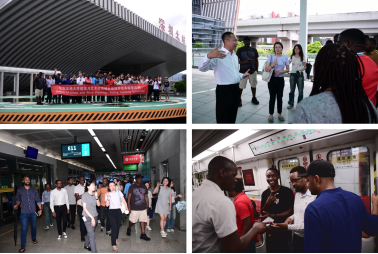
July 2: Multi-urban spatial perception collides with Chinese and foreign future urban wisdom
On the morning of July 2nd, under the leadership of Fang Yu, president of Shenzhen Branch of China Urban Planning and Design Institute, and Gong Zhiyuan, deputy director of Planning and Design Institute, teachers and students started a charming City Walk tour and learned about how Qianhai Houhai area was reclaimed from sea and built from scratch. The route follows the routes of Shenzhen Bay Vientiane City, Talent Apartment, Shenzhen Bay Cultural Plaza, Qiuxian Pavilion, Central River, Chuangye Road, Houhaihui and Jiale Road. Along the way, everyone personally experienced the vigorous construction of the city's high-end service industry area and felt the harmonious development between man and nature. What's particularly special is that the students witnessed the whole process of coffee delivery by drone Meituan, and deeply appreciated the unique charm of the perfect combination of urban planning, economic development and natural environment.
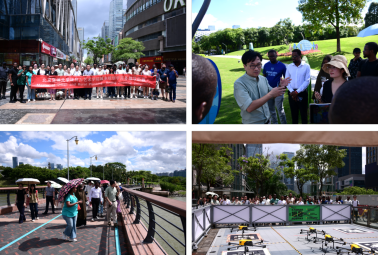
On the afternoon of July 2nd, international students and undergraduates held group exchanges and achievement reports together. Three experts, Zhao Penglin, Zong Chuanling and Xu Xuhui, were invited to serve as judges. The overseas students with master's degree analyzed the development ideas and planning strategies of Shenzhen rail transit and important hubs, and compared them with the actual situation in their own countries, showing their thinking of learning from innovation. Undergraduates started with the organization and spatial layout of transportation hubs, and combined with their own personal experience in the research process, showed their in-depth thinking and active exploration of professional fields. The three experts put forward valuable suggestions and detailed supplements for the performance of each group, which provided powerful guidance for students to further broaden their horizons and deepen their cognition.

The Shenzhen "Future City Workshop" in Shenzhen has a compact itinerary and rich content, and successfully completed the annual technical inspection task of the Ministry of Commerce and the requirements of undergraduate summer courses. Through the combination of lectures and field visits, Chinese and foreign teachers and students have a deep understanding of the connotation of "building a track is building a city", and realized the driving role of transportation mode in urban space transformation and the innovative power of urban space. The activity not only helps teachers and students to form a more comprehensive understanding of future transportation and urban development, but also promotes exchanges and cooperation among "the belt and road initiative" countries. Students from China's "the belt and road initiative" countries can learn from Shenzhen's advanced experience in rail transit, low-altitude economy and other fields, and accumulate strength for participating in the construction of their own cities in the future. This collision of wisdom across mountains and seas will eventually become a surging power to promote the development of global cities.